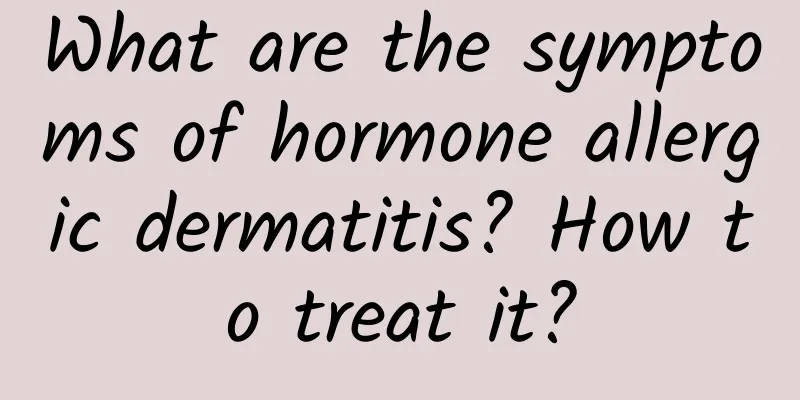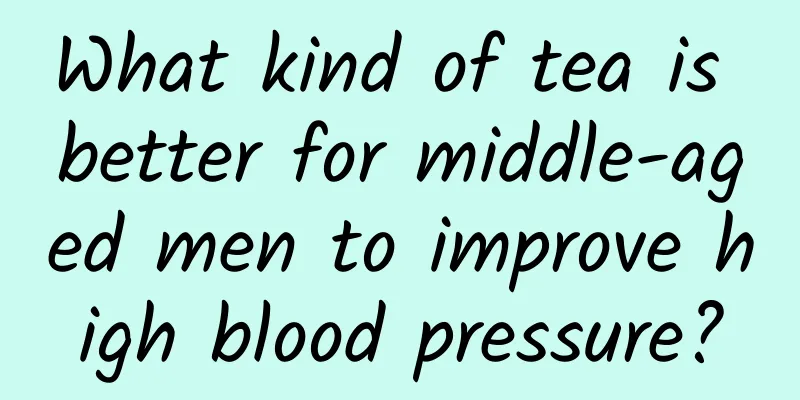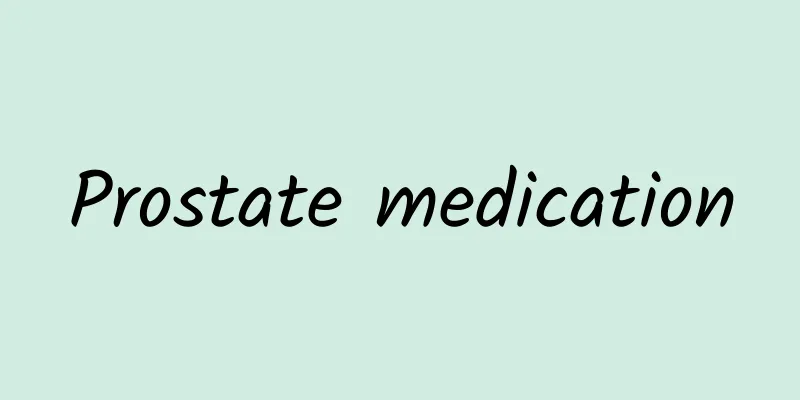What are the symptoms of hormone allergic dermatitis? How to treat it?

|
Hormone allergic dermatitis is a type of skin disease, which is generally caused by people taking hormone drugs. So, what are the symptoms of hormone allergic dermatitis? Symptoms of hormone allergy dermatitis: Hormone allergic dermatitis: Once the skin is invaded by hormones, the epidermis becomes very thin and the barrier function is damaged. When it comes into contact with irritants, it is very easy to cause various symptoms, such as redness, swelling, itching, pain, and in severe cases, yellow discharge and crusting. Symptoms such as tension and redness when exposed to heat, the patient has to continue to use hormones, and the dependence on hormones is more obvious; when the product is used again, the above symptoms and signs will quickly subside. If it is discontinued, the dermatitis symptoms will quickly recur, and gradually worsen, and the effect will decrease. It is necessary to increase the dosage or switch to a more potent hormone product, which is prone to recurrence. 1. Physical signs: varying degrees of atrophy, thinning, shiny, diffuse flushing or skin erythema on the facial skin, or capillary dilation, local swelling, dryness and desquamation, or acne-like rash or rosacea-like dermatitis or skin atrophy lines or folliculitis pustules. 2. Symptoms: local itching, burning pain, tightness, swelling or dryness. The above symptoms are aggravated by heat (such as sun exposure, hot bath, hot steam fumigation) and alleviated by cold. 3. The primary disease worsens after discontinuation of corticosteroids, and there are obvious hormone-dependent symptoms, that is, the condition improves rapidly after topical application of corticosteroids. Once the drug is stopped, more severe hormone rebound dermatitis will occur in 1 to 2 days or 3 to 5 days, and even bacterial and fungal infections may be induced. Treatment of steroid allergy dermatitis: Western Medicine There is no ideal treatment for hormone allergic dermatitis. The main treatment is to gradually reduce the strength and dosage of hormone drugs, and then combine them with antibacterial, anti-inflammatory and anti-allergic drugs until all hormone drugs are withdrawn. The treatment process takes 1-2 years, which is difficult for most patients to accept. It is emphasized that the treatment principle of this disease is local protection and soothing, and more importantly, the self-renewal of the skin. However, due to the long transit time of the epidermis and the fact that hormones can cause nutritional disorders in the epidermis, the recovery of this disease is slow. The treatment process takes 1-2 years, and most patients find it difficult to accept this slow recovery process. In this regard, doctors and patients' families should do a good job of ideological work for patients, ensure that they have a full understanding of the effects and side effects of hormones, and enhance their confidence in defeating the disease. Traditional Chinese Medicine Traditional Chinese medicine believes that hormones are pungent, dry, sweet and warm in nature. If used improperly for a long time, they can help yang turn into heat, generate heat and consume body fluids, and cause hyperactivity of yang to damage yin. Yin deficiency and internal heat type: erythema on the affected area, appearing and disappearing from time to time, hot flashes on the skin, especially in the afternoon, dry local skin, small scales, thin epidermis, dilated capillaries or pigmentation, accompanied by irritability and thirst, red tongue with little fluid, and thin pulse. Treatment should be to nourish Yin, clear heat and reduce redness. Traditional Chinese medicine treats dermatitis by eliciting the accumulated heat and toxins in the body and eliminating them, while improving the physical condition and restoring normal functions. The methods used include strengthening the spleen, removing dampness, activating blood circulation, clearing diarrhea, etc., depending on the patient's physical condition, and using fat-gelling creams. According to TCM syndrome differentiation, hormone allergic dermatitis is caused by excessive heart fire, which damages the blood vessels. The basic method should be to clear away heat and cool the blood, and on this basis, flexibly differentiate and treat. Blood-heat type: The affected area has erythema, papules, swelling, and rarely pustules. It is itchy, with mild pain and obvious burning sensation. It is often accompanied by irritability, thirst, red tongue, and rapid pulse. The treatment should be cooling blood to clear heat and detoxify. |
<<: How to reduce fat on your arms? These three movements are very effective
>>: What to do if you have a headache caused by a cold? This is a good solution
Recommend
What to drink to improve sexual performance? These six teas are the top choices!
When it comes to impotence, many people will thin...
How to make delicious red bean milk popsicles
Popsicles are almost everyone's favorite food...
Topical medication for glans sensitivity
The glans is an absolutely sensitive area on the ...
What can improve sperm quantity and quality?
If a man's sperm density or quality is abnorm...
Effect of foreskin on sperm
Long foreskin is a problem that many men have, bu...
Who knows what to eat for men who often stay up late?
In today's society, men are under pressure th...
Urinary tract bifurcation, men should be careful about this disease!
If a male friend has a bifurcated urinary tract, ...
What should I pay attention to if there are small red bumps on the glans?
Don’t be fooled by the fact that men always look ...
How long can you last without ejaculating when you have a dream?
Nocturnal dreams can be the result of sexual drea...
What are the harms of frequent ejaculation?
Ejaculation is the act of releasing semen during ...
Are you often troubled by back pain? Three small movements can help you relieve it
When it comes to back pain, I believe every male ...
Surprise! Oysters are a great helper for men to produce sperm and strengthen their virility
Although oysters are not eaten often, people have...
Banana and honey weight loss method allows you to lose weight safely
The banana and honey weight loss method is a very...
Reasons for acne on boys' noses
Most males in adolescence have a strong secretion...
What are the contraceptive methods? Healthy contraceptive methods
Sexual life is not only a process of nurturing th...









